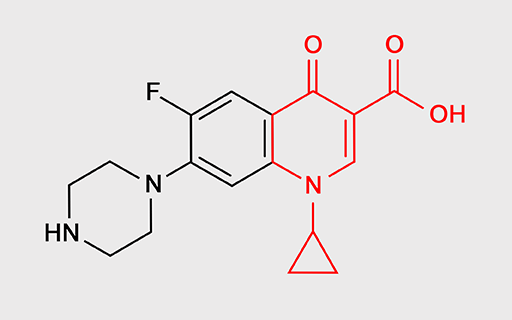2.3 Inhibitors of nucleic acid synthesis
Differences between enzymes that carry out the synthesis of nucleic acids in eukaryotic and prokaryotic cells allow antibiotics to target these processes in bacterial pathogens.
For example, fluoroquinolones (Figure 6) specifically inhibit bacterial enzymes that unwind the DNA double helix, separating the two strands so that the DNA can make a copy of itself. If this process does not happen,

Another class of antibiotics – rifamycins – inhibits RNA synthesis by binding to and inhibiting an enzyme called RNA polymerase. This enzyme transfers the instructions carried by genes to the intermediary molecule, mRNA. Interference in this process ultimately stops new proteins being made.
